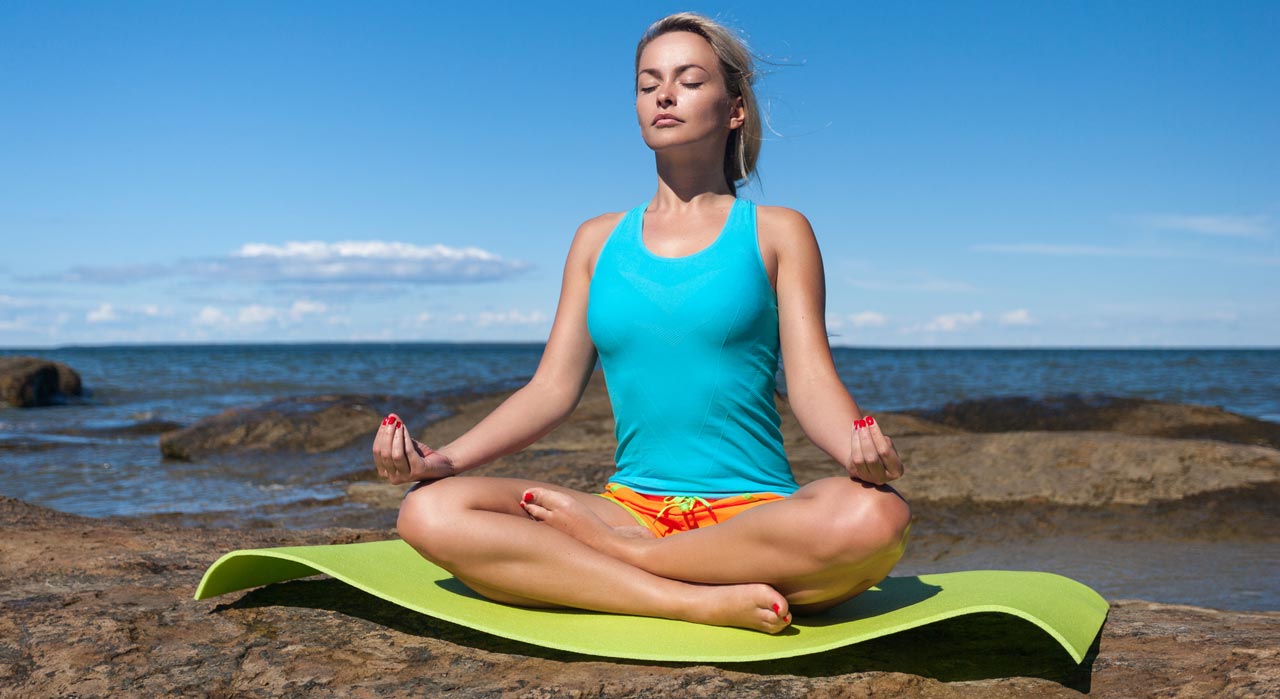Yoga is the practice of using the mind and body to find peace for both. The practice began in India over 5000 years ago.
Archaeologists and anthropologists believe that yoga practices began long before written history. Yoga started as a spiritually-based practice of physical exercise, mental and spiritual balancing, and even behavioral guidelines. Today, while some people still practice yoga as a spiritual path, there are also many who use it as a way to relax, fight stress, and get exercise.
Yoga is a low-impact way of staying fit that incorporates healthy mind-body practices that help fight stress.
Types of Yoga
There are many types of yoga. Some of the more commonly practiced ones in the US include:
- Hatha Yoga is a blanket term that encompasses most types of yoga practiced in the West today. It is the practice of doing physical poses that are designed to calm the body and mind to prepare for meditation.
- Bikram Yoga is a series of 26 poses that are done the same way every time. The poses are performed in a heated room.
- Hot Yoga is the same as Bikram except that some or all of the poses that are done are different than the 26 that are used in Bikram. The poses are still performed in a heated room.
- Kundalini Yoga is meant to release energy that is believed to be located at the base of the spine. It includes chanting, meditation, intense physical poses, and more relaxing ones.
- Vinyasa Yoga is a series of yoga movements done in such a way that one pose fluidly leads into the next. Vinyasa can be quite physically demanding.
- Restorative Yoga is an incredibly relaxing form of yoga in which props are used to achieve poses without exerting physical effort.
This is only a small sampling of the huge variety of yoga types that are practiced and taught.
How Does Yoga Decrease Stress?
The core elements of hatha yoga and most general yoga classes you would take are:
Physical Poses. These series of movements that are done during yoga are physical exercise, which is known to decrease stress hormones.
Deep Breathing. Paying attention to your breathing and using a specific method to breathe deeply centers your attention and focuses your mind, allowing it to slow its racing and be peaceful. This, in turn, can decrease the physical manifestations of stress, including blood pressure (Rajeev Mohan Kaushik, 2006). You can learn some specific techniques here: “Breathing Techniques for Relaxation.”
Meditation. Yoga often involves meditation. Dismissing thoughts as they come up and, instead, maintaining your focus on a single word, thought, your breathing, or an object. The regular practice of meditation can help you better control your mind and go through life without reacting to most things with stress. You can learn more here: “Meditation: An Overview.”
If you’d like to try yoga but don’t know where to start, you can do an internet search for yoga classes in your community. Simply speaking to the teacher can help you decide with which class you would be best off starting. You can also use the internet to look for YouTube videos on yoga or get a beginner yoga video#AD and begin your exploration that way.
The more you incorporate yoga into your daily routine, the more lasting effects it can have on your stress levels and your life.
Works Cited
- Rajeev Mohan Kaushik, R. K. (2006, June). Effects of mental relaxation and slow breathing in essential hypertension. Retrieved from Complementary Therapies in Medicine: DOI: 10.1016/j.ctim.2005.11.007.

Yoga teaches that controlling your breathing can help you control your body and quiet your mind.
Thank you for the descriptions of different types of yoga. I am new to it all, and too embarrassed to ask my friends. Very helpful.
Yoga not only is an effective method to reduce stress but also is a good way to get fit and stay healthy.
Yoga is a mind-body practice that combines physical poses, controlled breathing, and meditation or relaxation.
Good afternoon. Many thanks 🙂 Useful article!.